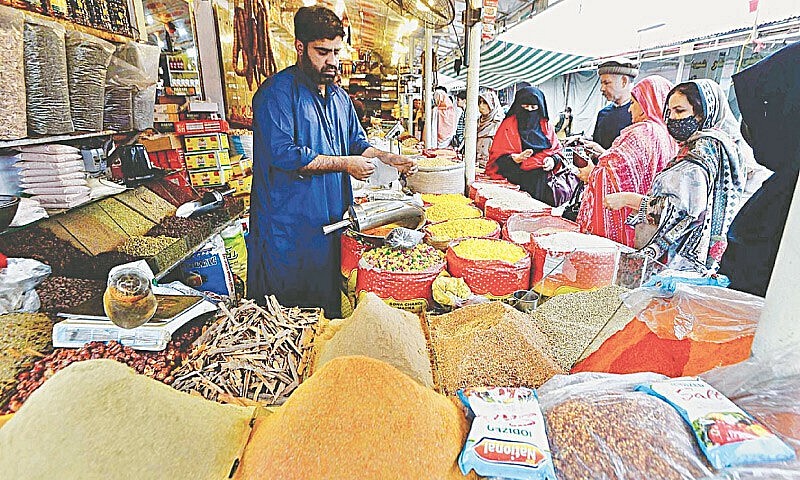Islamabad: Annual inflation jumps to 29.2pc in November
 |
| FOOD inflation for November stood at 29.8pc in urban and 29.2pc in rural areas, whereas non-food inflation was 30.9pc in urban and 25.9pc in rural areas, official data showed. APP/file |
In November, gas prices jumped by 520pc and electricity rates by 34.95pc year-on-year for urban consumers, becoming two major factors contributing to high inflation.
Consumer prices were also significantly higher in November compared with October; the month-on-month inflation reading was 2.7pc, the highest since July. Again, a 280pc increase in gas prices was the main factor.
The latest reading took up the average annual inflation rate to 28.62pc during July-November compared to the State Bank’s projected rate of 20pc to 22pc for the current fiscal year.
The central bank’s forecast was based on improved agricultural output and administrative measures taken to curb volatility in the foreign exchange markets.
The International Monetary Fund has also forecast the average inflation for the 2023-24 fiscal year to be 25.9pc, a significant easing from the previous year’s 29.6pc. The federal government has set an annual inflation target of 21pc for the current fiscal year.
The headline consumer inflation — measured by a basket of goods and services called the Consumer Price Index (CPI) — has been elevated since mid-2022 after the PML-N-led coalition government took several measures demanded by the IMF to unlock stalled funding.
The goods and services in the CPI basket are divided into 12 major components with different weights. The indexes for two groups with the highest weight — “non-perishable food items” and “housing, water, electricity, gas and fuels” — both saw an annual increase of over 30pc in November.
The index for the “alcoholic beverages and tobacco” category saw the highest annual jump, at 82.8pc, though its weight in the CPI is just 1pc compared to food’s 35pc.
Food, core inflation
Food inflation for November stood at 29.8pc in urban and 29.2pc in rural areas, whereas non-food inflation was 30.9pc in urban and 25.9pc in rural areas.
Core inflation, which strips out volatile food and energy prices, was almost steady at 18.6pc compared to 18.5pc last month.
Main contributors
In urban areas, the food items whose prices saw the highest annual increase in November included condiments and spices (67.6pc), wheat flour (63.5pc), rice (58.3pc), beans (55pc), tea (52.4pc), gur (50pc), sugar (49.9pc), beverages (46.5pc), potatoes (41.8pc), and pulse mash (41.7pc).
In the non-food category, gas charges rose 520pc, followed by textbooks (94.7pc), stationery (45.9pc), washing soap/detergents/matchbox (43.9pc), communication apparatus (39.9pc), household equipment (36pc), electricity charges (34.9pc), and drugs and medicines (34.6pc).
In rural areas, the highest annual increase was seen in the prices of food items like wheat flour (64.7pc), rice (60.8pc), sugar (54.7pc), dessert preparation (53.6pc), tea (52.2pc), gur (49.1pc), beverages (47.2pc), potatoes (45.7pc), wheat products (45.1pc), beans (44.9pc), dry fruits (40.5pc), pulse mash (40pc) and wheat (39.6pc).
In the non-food category for rural areas, the prices of textbooks jumped 106.8pc, followed by transport services (51.3pc), washing soaps, detergents and matchbox (48.2pc), newspapers (46.3pc), appliances/articles/products for personal care (44.9pc), stationery (37.3pc), household equipment (35.3pc), and electricity charges (34.9pc).
